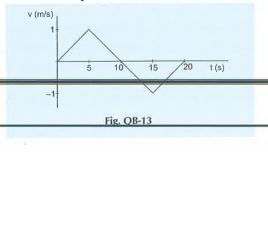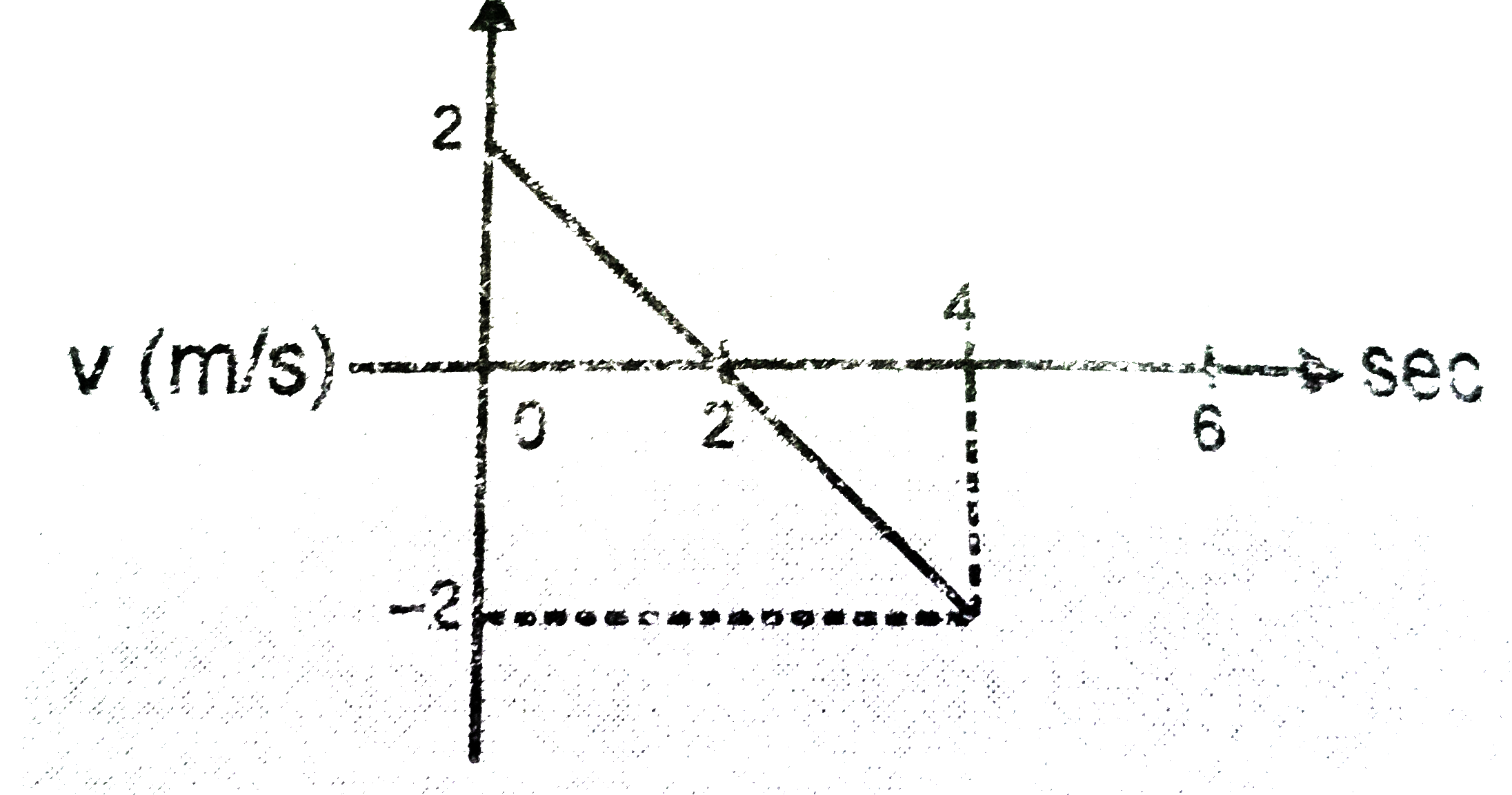A particle having initial velocity 5m/s moves with a constant acceleration 2ms−2, for time 10 secondalong a straight line. Find the displacement of the particle in the last one second and the total distance traveled in 10 seconds.
To solve the problem, we need to find two things: the displacement of the particle in the last one second (the 10th second) and the total distance traveled in 10 seconds.
Step 1: Find the displacement in the last one second (10th second)
We can use the formula for displacement during the nth second, which is given by:
Sn=u+a2⋅(2n−1)
Where:
- Sn is the displacement in the nth second
- u is the initial velocity
- a is the acceleration
- n is the second for which we want to find the displacement
For the 10th second:
- u=5m/s
- a=2m/s2
- n=10
Substituting the values into the formula:
S10=5+22⋅(2⋅10−1)
Calculating the term inside the parentheses:
S10=5+1⋅(20−1)
S10=5+1⋅19
S10=5+19
S10=24m
Step 2: Find the total distance traveled in 10 seconds
We can use the formula for total displacement over time, which is:
S=ut+12at2
Where:
- S is the total displacement
- u is the initial velocity
- a is the acceleration
- t is the total time
Substituting the known values:
S=5⋅10+12⋅2⋅(10)2
Calculating each term:
S=50+12⋅2⋅100
S=50+1⋅100
S=50+100
S=150m
Summary of Results
- The displacement in the last one second (10th second) is 24 m.
- The total distance traveled in 10 seconds is 150 m.
- Sn is the displacement in the nth second
- u is the initial velocity
- a is the acceleration
- n is the second for which we want to find the displacement
- u=5m/s
- a=2m/s2
- n=10
S10=5+1⋅19
S10=5+19
S10=24m
- S is the total displacement
- u is the initial velocity
- a is the acceleration
- t is the total time
S=50+1⋅100
S=50+100
S=150m
- The displacement in the last one second (10th second) is 24 m.
- The total distance traveled in 10 seconds is 150 m.
Topper's Solved these Questions
- KINEMATICSBOOK - PRADEEPCHAPTER - KINEMATICSEXERCISE - 1 SolvedExamples
17 Videos
- KINEMATICSBOOK - PRADEEPCHAPTER - KINEMATICSEXERCISE - 2 SolvedExamples
31 Videos
- GRAVIATIONBOOK - PRADEEPCHAPTER - GRAVIATIONEXERCISE - Assertion-Reason Type Questions
19 Videos
- LAWS OF MOTIONBOOK - PRADEEPCHAPTER - LAWS OF MOTIONEXERCISE - Assertion- Reason Type Questions
17 Videos
Similar Questions
A particle having initial velocity 4 m/s moves with a constant acceleration 1m/s2 for a time interval of 10 second in straight line. Find the displacement of the particle in the last second and the distance travelled in 10 second.
View SolutionA particle having initial velocity u moves with a constant acceleration a for a time t. a. Find the displacement of the particle in the last 1 second . b. Evaluate it for u=5m/s,a=2m/s2andt=10s.
View Solution
Knowledge Check
A particle has an initial velocity of 9m/s due east and a constant acceleration of 2m/s2 due west. The displacement coverd by the particle in the fifth second of its motion is :
AzeroB0.5mC2mDNoneA particle is moving in a straight line under constant acceleration of 4m/s2. If its velocity at t=0 is 10 m//s, the displacement of particle in the 5th second of its motion is
A28mB100mC34mD50mA body is initially moving with a velocity of 10 m/s. It undergoes an acceleration of 2m/s2 for 5 seconds. Find the displacement (in m) of this body in these 5 seconds
A25B37.5C50D75
The velocity of a particle moving along a straight line varies with time as shown in the Figure. Find the total distance covered and the total displacement between 0 and 20 seconds.

View SolutionA particle starts from the origin and moves along a stright line If the velocity of the particle at time t seconds 10t cm/s then find the distance traversed during fist seconds after the start.
View SolutionVelocity time graph for a particle moving in a line is given.
Calculate the displacement of the particle and distance travelled in first 4 seconds.

View SolutionA particle starts from rest and moves with a constant acceleration of 4m/s2 for 10s, then it moves under constant seceleration and stops in 20s. Find (a) the maximum velocity attained by the particle (b) the total distance traveled and (c ) the distance/distances from the origin, when the particle is moving at half the maximum velocity.
View SolutionA body is initially moving with a velocity of 5 m/s. It undergoes an acceleration of 2 m/s2 for 4 seconds. Find the displacement (in m) of this body in these 4 seconds.
View Solution
